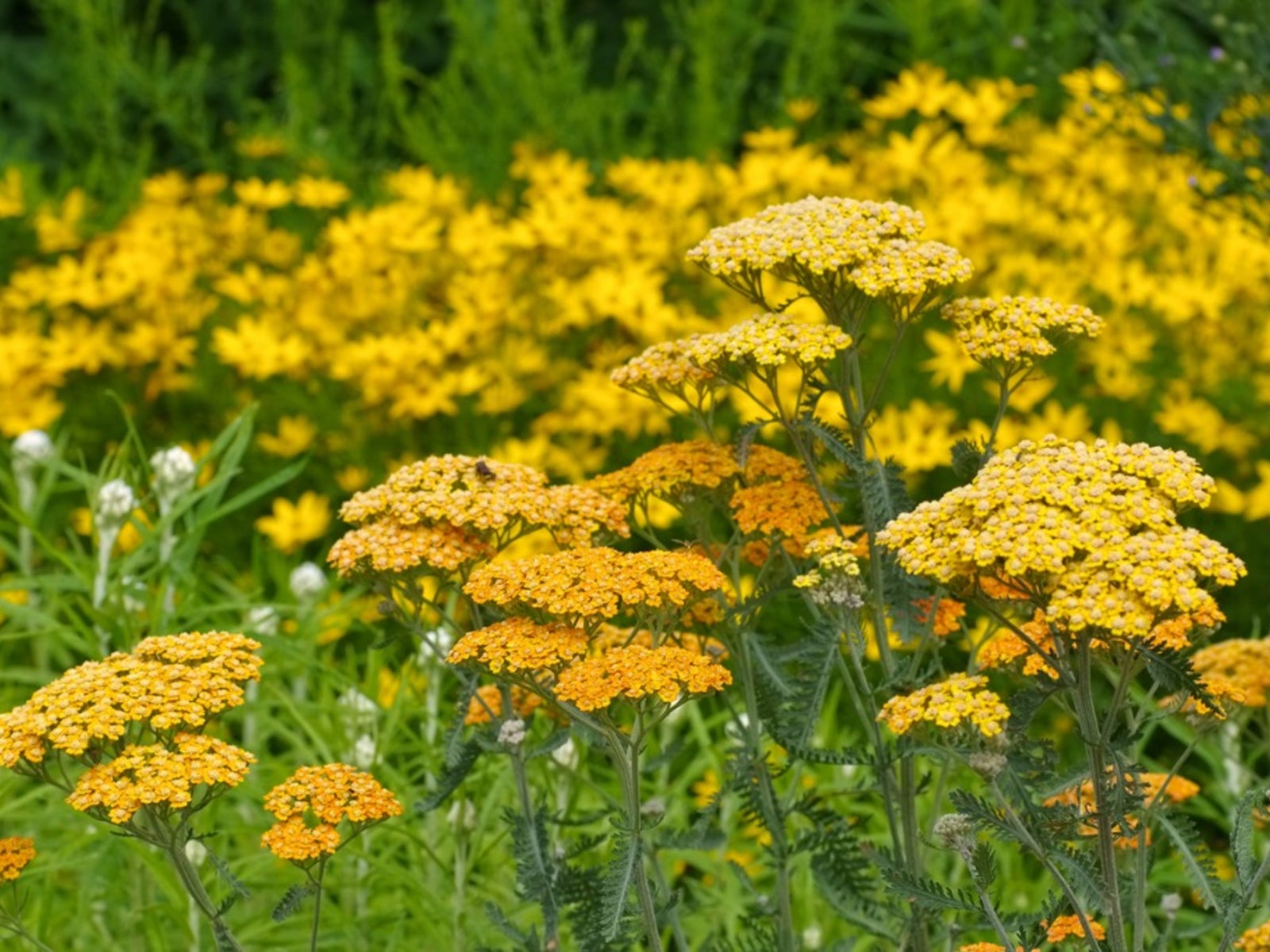Zone 4 Xeriscape Plants – What Are Some Cold Hardy Xeriscape Plants


Temperatures in zone 4 can fall between -30 down to -20 degrees F. (-34 to -29 C.). These areas can get downright cold in winter but often have hot, short summers, requiring cold hardy xeriscape plants that can survive ice and snow but conserve water in the growing season. Zone 4 xeriscape plants must be the most adaptable of flora, developing hardiness in two types of weather extremes. Some tips and lists on the perfect cold region xeriscape plants can get you started on the path to drought garden success.
What are Cold Hardy Xeriscape Plants?
Xeriscaping is all the rage. Conserving our natural resources and avoiding waste while keeping our utility bills down is the goal. Sadly, many xeriscape plants hail from regions with consistent warm temperatures year-round and are not suitable for zone 4 gardens. There is light at the end of the tunnel, however, as zone 4 regions such as Colorado, Montana, and North Dakota extension services have compiled lists of plants that will not only survive but thrive in these cold season climates. Xeriscape plants are used in a dry garden, or one which doesn't receive supplemental irrigation. Often, the soil is sandy or gritty and the area may be in scorching sun or hilled, which allows any moisture to drain off before plant roots can uptake it. In zone 4 regions, the area may also be subjected to extreme ice, snow, and sustained cold in winter. The average annual temperatures in these zones are not optimum for many plants' growth. This can be a challenging situation for the gardener. Xeriscape gardening in zone 4 requires careful planning and selection of plants that are deemed hardy in cool climates. There are seven effective steps to implementing a xeriscape garden in any situation. These are: planning, zoning of plants, soil, efficient irrigation, turf choice and alternatives, mulching, and ongoing maintenance.
Flowering Drought Tolerant Zone 4 Plants
The main goal is to find plants that are sustainable in winter cold and summer's dry heat, but why not also make the area attractive and a draw for pollinators such as butterflies and bees? Choosing native plants is often the best way to select drought tolerant specimens because they have already adapted to the region's fluxes of temperature. You may also opt for non-native plants but be very choosy on the varieties and make sure they are hardy to zone 4. Some ideas for beautiful zone 4 color include:
- Yarrow
- Agastache
- Catmint
- Ice plant
- Russian sage
- Prairie coneflower
- Creeping western sandcherry
- Apache plume
- Blazing star
- Beardtongue
- Hood's phlox
- Bee balm
- Lupine
- Blanket flower
- Columbine
- Coreopsis
Trees and Shrubs as Zone 4 Xeriscape Plants
Trees and shrubs are also useful for xeriscape gardening in zone 4. While some may be evergreen and give interest year-round, others are deciduous but provide colorful fall displays and may also have persistent inflorescences. Still others provide human and wildlife food often into winter. Each gardener must assess his/her own wants and needs in the plants established in the xeriscape garden. Drought tolerant zone 4 plants in this category must still be hardy enough to handle the extreme cold. Creating microclimates can help encourage the use of plants on the edge of this hardiness. These might be areas with some natural or manmade protection, installing on southern walls to avoid northern winds, and maximize sunlight or even using hardy plants to shield slightly less hardy specimens. Trees
- Ponderosa pine
- Colorado blue spruce
- Rocky Mountain juniper
- Quaking aspen
- Green ash
- Limber pine
- Crabapple
- Downy hawthorn
- Bur oak
- Russian hawthorn
- Amur maple
- Honey locust
- Mugo pine
Shrubs
- Yucca
- Sumac
- Juniper
- Golden currant
- Chokeberry
- Prairie rose
- Juneberry
- Four-winged saltbush
- Silverberry
- Oregon grape
- Burning bush
- Lilac
- Siberian pea shrub
- European privet
There are many more appropriate drought tolerant plants for zone 4 gardens. While zone and drought tolerance are important considerations, you must also take into account lighting needs, size, invasive potential, maintenance, and growth rate. Plants with the potential to become damaged in extreme cold can also be protected with coverings and by mulching the root zone. Mulching also serves to conserve moisture and enhance fertility and drainage. Planning a xeriscape garden in any zone requires some design and research to identify the right plants that will fulfill your dream and needs.
Gardening tips, videos, info and more delivered right to your inbox!
Sign up for the Gardening Know How newsletter today and receive a free copy of our e-book "How to Grow Delicious Tomatoes".

Bonnie Grant is a professional landscaper with a Certification in Urban Gardening. She has been gardening and writing for 15 years. A former professional chef, she has a passion for edible landscaping.